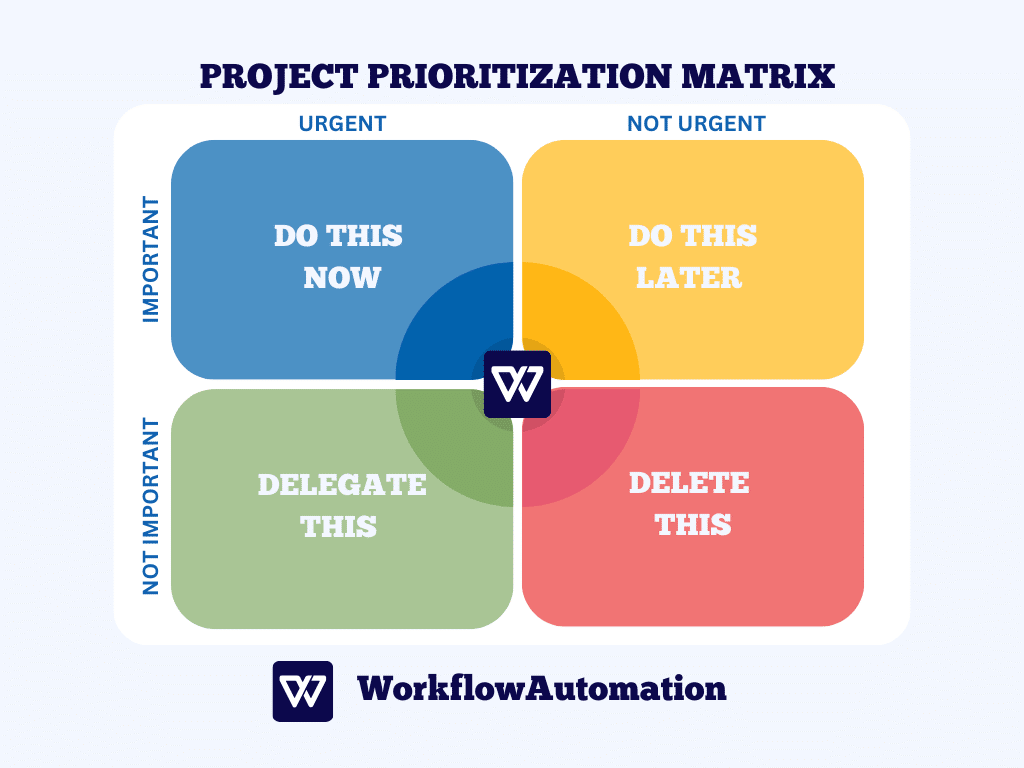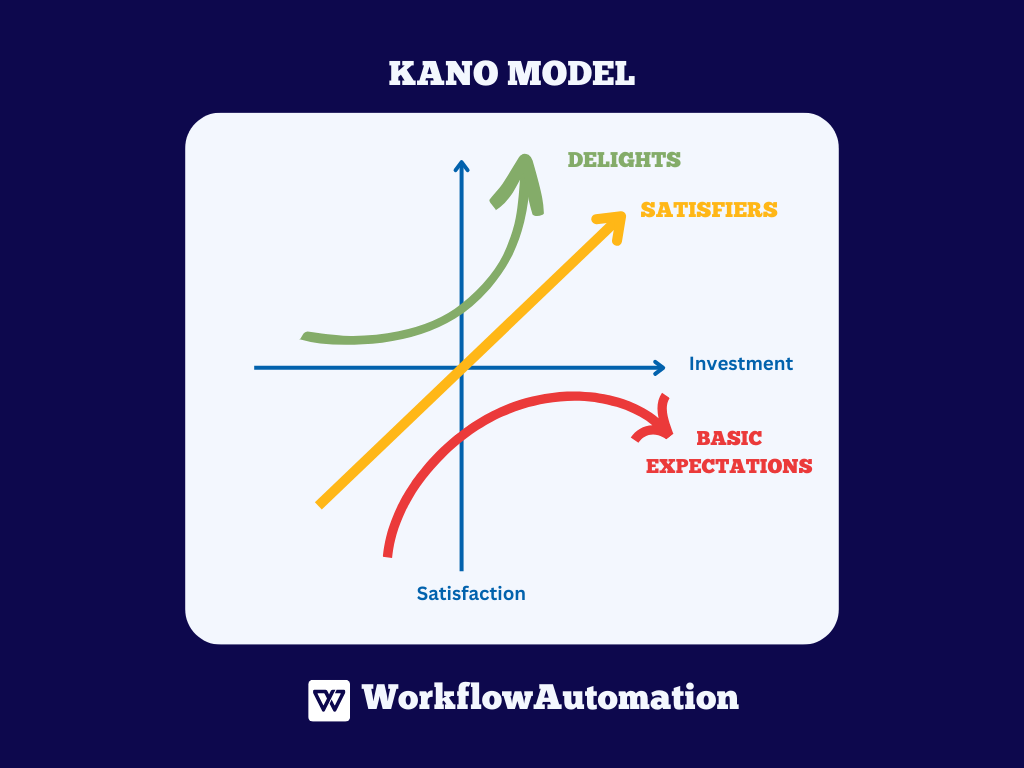In the dynamic business world, achieving success requires more than just having resources and talented individuals. Without proper organization, your chances of coming on top are slim, which is why you should master the art of project prioritization.
Project prioritization enables you to effectively manage your projects and ensure their successful realization.
In the forthcoming paragraphs, we will delve into the essential elements of project prioritization, providing you with invaluable insights to successfully execute your projects and maintain a thriving business.
What is Project Prioritization?
Project prioritization involves the process of selecting and implementing the most important project among a range of upcoming initiatives.
The methodology for project prioritization can vary, and the approach you adopt will heavily depend on the specific circumstances at hand. The primary factors guiding your decision-making will be driven by your own needs.
For instance, if one project relates to enhancing the security of your website or business, it naturally assumes a higher priority. However, the selection and prioritization of projects extend beyond your immediate needs and urgency. Considerations such as project complexity, available time, and the resources at your disposal come into play.
To effectively conduct project prioritization, it is essential to have a project plan for each potential initiative. This enables you to realistically anticipate and evaluate what each project entails.
In the following sections, we will delve into the detailed benefits and explore the most effective strategies for project prioritization.
The Importance of Project Prioritization
Project prioritization holds significant importance as its successful implementation enhances productivity within an organization, fosters stakeholder collaboration, and overall benefits the organization’s operations.
Let’s concretize the importance of project prioritization into three key elements:
- Resource Optimization. Making informed decisions about the order of project execution allows for the proper allocation of resources, including people, equipment, time, and financial resources. This leads to an efficient workflow and greater productivity.
- Strategic Alignment. Depending on the specific needs of the organization, a strategic approach to project prioritization is crucial. It involves aligning the sequence of project execution with the company’s goals. Determining which project will contribute the most to the long-term success of the organization and ensuring that its objectives align with the company’s vision and mission.
- Larger Organization. Project prioritization plays a crucial role in larger companies where multiple projects are carried out simultaneously. It is necessary to establish workflows for each project and thoroughly analyze the benefits and drawbacks of each project in relation to the company’s resources and goals.
The responsibility for project prioritization is often assigned to specialized roles, such as program managers or portfolio managers, who oversee the prioritization process and ensure its proper implementation.
How to Prioritize Projects
And here we come to the crucial question—how to prioritize a project and ensure that your management and team unlock their full potential and dedicate attention to what truly matters.
In the following steps, we will outline what project prioritization looks like.
#1. Assemble a list of projects. Simply put, not all projects have equal importance for a company. Some may become relevant later, while others are exactly what you need to work on right now.
Therefore, begin by compiling a comprehensive list of all projects and try to closely evaluate their significance in relation to your company’s goals and objectives; in other words, you should identify projects that align closely with strategic priorities.
#2. Define project prioritization criteria. After creating a list of projects that align with your strategy, the next step is to define criteria that will determine the significance of each project.
These criteria are the values against which you will evaluate projects and find answers to which projects you should prioritize.
Here are some key components to consider when defining project prioritization criteria:
- Project business value
- Potential risks required resources
- Interdependencies with other projects
- Project complexity
- Estimated project duration
Let’s take the financial aspect of a project as a project prioritization criteria example. Once you have established the financial structure, including investment requirements, market opportunities, customer satisfaction, return on investment, and others, the next step is to ensure that the project meets the financial criteria.
#3. Analyze projects. The defined criteria will serve as a filter through which you will evaluate each project, gaining a broader understanding of which projects have the highest potential and significance for your company.
For instance, if a project has high profitability but requires more resources and technical expertise than you currently possess, and there is a high risk associated with entering specific markets, you should carefully consider whether it deserves the top spot on your list.
It is recommended to concentrate on achieving an optimal level of fulfillment for all criteria rather than focusing on just a few.
#4. Manage projects. After conducting a thorough analysis and creating a priority list, align your team’s efforts with the projects that occupy the top positions and hold the greatest strategic value. By doing so, you ensure that your team is focused on the most important initiatives that will drive the company forward.
5 Project Prioritization Tools
To effectively manage projects, the team should prioritize them based on strategic alignment, potential impact, and resource allocation, and this is where project prioritization tools play a vital role.
Let’s explore when and how the following tools can assist you:
#1. Prioritization Matrix
The project prioritization matrix is a project prioritization tool used in various business contexts, including project management, to effectively prioritize projects based on the company’s needs. It involves categorizing projects into different “cells” of the matrix, considering their urgency and importance.
It distinguishes four cells:
- Urgent and important. These projects are significant and have impending deadlines.
- Important, but not urgent. This cell typically contains long-term projects that hold substantial significance.
- Urgent, but not important. Implementation is urgently needed, but the projects are generally not of great importance.
- They have no significant value. This group of projects lacks urgency and holds no significant value.
To apply this tool, you first need to define the specific criteria that you will use to evaluate which cell a project belongs to. The criteria can be customer-centric, financially viable, strategically important, and so on.
Once the criteria are defined, assign a weight to each criterion based on its importance to your company. This weight determines how many points satisfying the criterion will carry. This way, the matrix allows for easy sorting and prioritization.
#2. The Kano Model
The Kano Model is a customer-centric framework that plays a vital role in prioritizing projects based on customer satisfaction.
It helps companies categorize customer requirements into three types:
Basic. To fulfill this requirement, the company needs to have knowledge of the fundamental characteristics that the product should have, such as the essential features that will satisfy the customers’ needs.
For example, for a television, basic requirements may include a flat screen, smart TV capabilities, etc.
Performance. This requirement implies that the features of the product should function well. The better the performance of the produced model, the higher the customer satisfaction. This requirement is met when the expected results are achieved and even exceeded with the produced model.
For example, excellent picture quality, good resolution, etc. If the model performs well and is of high quality, it can foster customer loyalty.
Delight. The final requirement refers to situations where the product provides unexpected features or innovations that pleasantly surprise customers in ways they did not anticipate. Such a reaction from customers leaves a lasting impression, and if that positive experience is created, it holds significant weight and opens doors for future development.
By understanding customer expectations and prioritizing projects that focus on delivering performance and delight attributes, companies can meet customer needs effectively.
#3. Payback Period
This project prioritization tool focuses on determining the time required to recover the initial investment made in a specific project, such as purchasing machinery or hiring new employees.
Specifically, when it comes to machinery, it considers the amount of money invested in its purchase and the expenses incurred during its operation. The goal is to assess how much profit the investment will generate.
By utilizing the Payback Period tool, companies can easily prioritize projects by comparing the investment costs associated with their implementation to the expected returns.
#4. Scoring Model
The scoring model involves a comprehensive evaluation of the strengths and weaknesses of each project, resulting in a score that determines its priority. Projects with higher scores are given precedence over others.
To assess each project, specific criteria are established, such as financial requirements, customer relevance, and alignment with the company’s strategic objectives.
It’s important to weigh these criteria appropriately, giving more significance to those that are crucial for the company’s success. By assigning points to each criterion, the scoring model enables easy comparison and effective project prioritization.
#5. Net Present Value
Net Present Value is a project prioritization tool with a financial basis. When using this tool, the question posed is how much value the project will have after it is completed, taking into account a certain timeframe. Will it be profitable in the future?
Since every project, in addition to its idea, plan, and resources, has a duration, this tool focuses on calculating the present value of future cash flows generated by the project.
For example, in the case of real estate, the cash inflows would be rental income or sales, and they are subtracted from the project’s initial investment and other expenses, such as purchasing and furnishing a house. By calculating the present value of the project, we can determine whether it is worthwhile to pursue it or not.
4 Project Prioritization Best Practices
Here are some of the best project prioritization practices to consider:
Delegate the Work
Delegation is like a skilled conductor who understands the capabilities and strengths of each musician. By assigning responsibilities and tasks to the right individuals, you create a harmonious ensemble where every team member contributes their expertise.
Delegating specific tasks to team members who possess the necessary skills motivates them to deliver high-quality results. In addition, delegation increases the accountability of team members, as each of them becomes a mini-manager of their assigned task and is responsible for it.
Delegation also fosters inevitable collaboration within the team since every project requires teamwork.
Use Project Management Software
A true ally in project prioritization can be found in project management software. You have many software options at your disposal, some of which are completely free, but one thing is certain—each of them will be of great help in achieving your goals.
Project management software empowers project managers to allocate resources effectively, set deadlines, and assign tasks with precision. These tools also gather and centralize data from various sources, allowing project managers to monitor progress, analyze trends, and make informed decisions that will contribute to shaping the project.
Define Clear Objectives and Goals
Establishing clear project objectives and goals is vital for prioritization. By defining what needs to be achieved, you can identify and focus on the most critical tasks and deliverables.
Clear objectives also assist in aligning the team’s efforts, providing a sense of direction and purpose.
Involve Stakeholders
Engage relevant stakeholders throughout the prioritization process. Consider input from project sponsors, executives, customers, and end-users.
Stakeholders’ perspectives can provide valuable insights and help prioritize projects that align with their and your needs.
Conclusion
It is understandable and natural that you want to complete all the projects that come your way. But first, ask yourself whether it is feasible, and if yes, what is the purpose of doing so?
Taking on large tasks can cost you a lot of resources and energy, and it can even lead to missed opportunities that you may not have noticed. To avoid this, prioritize projects by determining which ones will have the greatest impact on your overall success, and then go all-in on those.
To do this, follow four steps for identifying such projects, rely on project prioritization tools, and involve your team, stakeholders, and other important actors in choosing the project that is truly essential for your business.








